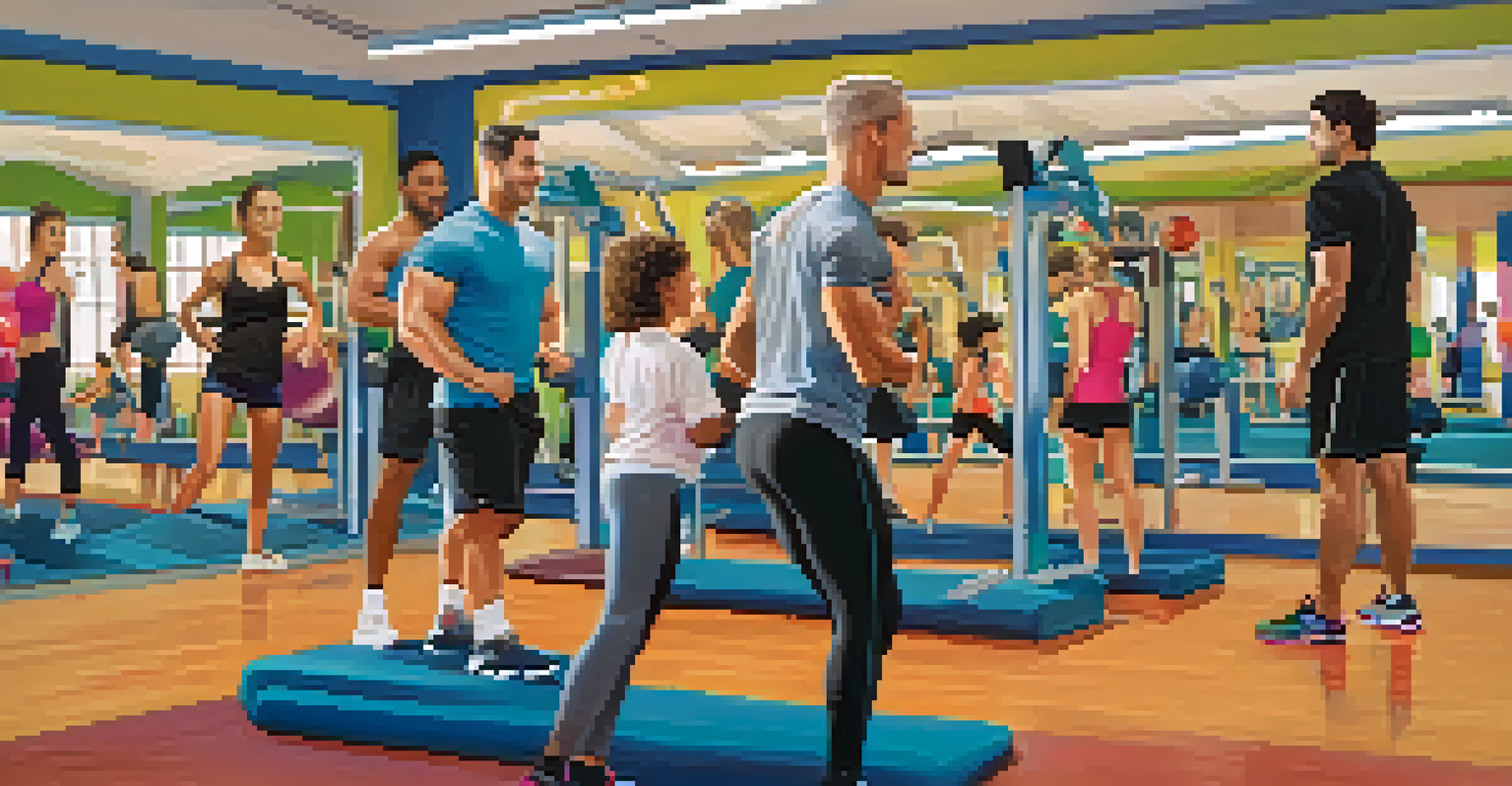The Importance of Warm-Up in Fitness Goal Achievement

Why Warm-Up Matters: Setting the Stage for Success
Every great performance begins with preparation, and in fitness, that starts with warming up. A proper warm-up not only readies your body for exercise but also minimizes the risk of injury. Think of it like warming up your car on a cold morning; you wouldn’t just jump in and drive full speed right away, would you?
An ounce of prevention is worth a pound of cure.
Warming up increases blood flow to your muscles, making them more pliable and ready for action. This process helps improve your range of motion, which is crucial for executing exercises safely and effectively. If you want to achieve your fitness goals, starting with a warm-up is non-negotiable, much like stretching before a big game.
Additionally, a good warm-up prepares your mind as well. It allows you to focus on your workout, setting a positive tone for the session ahead. When your body and mind are in sync, you’re more likely to push through barriers and achieve your goals.
The Science Behind Warming Up: How It Works
At a physiological level, warming up increases your heart rate and elevates your body temperature. This process enhances muscle elasticity and oxygen delivery, making it easier for your body to perform at its best. Imagine your muscles as elastic bands; cold bands are stiff and prone to snapping, while warmed bands stretch and flex without issue.

Moreover, a warm-up stimulates your nervous system, improving coordination and reaction time. This is particularly important for activities that require agility and precision, like sprinting or weightlifting. Just as a musician tunes their instrument before a concert, athletes need to tune their bodies for optimal performance.
Warm-Ups Reduce Injury Risk
Warming up increases blood flow and muscle elasticity, preparing your body to handle exercise and reducing the likelihood of injuries.
Finally, warming up can enhance metabolic functions, making your body more efficient at burning calories during your workout. This means that by taking a little time to warm up, you’re actually setting yourself up for a more effective workout, which is a win-win situation for anyone aiming to reach their fitness goals.
Common Warm-Up Mistakes to Avoid
While warming up is crucial, many people make common mistakes that can undermine its effectiveness. One of the most prevalent errors is rushing through the warm-up or skipping it altogether. Just as you wouldn’t skip breakfast before a big day, skipping a warm-up can leave you unprepared and vulnerable to injuries.
The secret of getting ahead is getting started.
Another mistake is focusing solely on static stretching, which can actually decrease muscle performance. Instead, dynamic stretches that mimic the movements you’ll be doing in your workout are far more effective. For instance, instead of holding a hamstring stretch, try leg swings that engage your muscles in a more functional way.
Finally, many individuals overlook the mental aspect of warming up. It’s not just about getting the body ready; it’s also about getting in the right mindset. Take a moment to visualize your workout and set intentions for what you want to achieve, ensuring you start with purpose and focus.
Effective Warm-Up Techniques for Every Fitness Level
The beauty of warming up is that there are techniques suited for everyone, regardless of fitness level or activity. For beginners, simple movements like arm circles or leg swings can effectively loosen up the body. Think of these as the building blocks for more intense workouts; they create a solid foundation for future progress.
As you gain experience, incorporate sport-specific drills into your warm-up. For example, if you’re preparing for a run, include high knees or butt kicks to engage the muscles you'll be using. This not only improves your performance but also makes your warm-up feel more relevant and fun.
Enhances Performance and Focus
A proper warm-up not only prepares your body but also tunes your mind, setting a positive tone for achieving your fitness goals.
Lastly, don’t forget about the power of mobility exercises. These can enhance joint function and flexibility, setting you up for success in various activities. Whether you’re doing yoga, lifting weights, or playing a sport, mobility drills can tailor your warm-up to meet your unique fitness needs.
The Role of Warm-Up in Injury Prevention
Injuries can be a significant setback in any fitness journey, but warming up can play a vital role in prevention. By increasing blood flow and improving muscle elasticity, warm-ups prepare your body to handle stress more effectively. Just as you wouldn’t dive into a pool without checking the water first, don’t dive into exercise without a proper warm-up.
Certain types of injuries, such as strains and sprains, are often linked to inadequate preparation. When your muscles are cold and stiff, they’re more prone to injury. A warm-up serves as a protective barrier, ensuring your muscles are primed for the demands of your workout.
Ultimately, investing a few extra minutes in a warm-up can save you weeks of recovery time from injuries. By prioritizing this crucial step, you’re not just enhancing your performance; you’re safeguarding your fitness journey, allowing you to stay on track toward your goals.
How to Structure an Effective Warm-Up Routine
Creating an effective warm-up routine doesn’t have to be complicated. Start with 5 to 10 minutes of light aerobic activity, such as brisk walking or cycling, to gradually raise your heart rate. This initial phase should feel comfortable and serve as a gentle introduction to your workout.
Follow this with dynamic stretches that target the major muscle groups you’ll be using. Incorporate movements like lunges, arm swings, or torso twists to improve flexibility and mobility. The key is to focus on controlled movements that mimic the intensity and patterns of your upcoming workout.
Common Mistakes to Avoid
Rushing through warm-ups or relying solely on static stretching can undermine their effectiveness, so it's important to focus on dynamic movements.
Finally, wrap up your warm-up with a few sport-specific drills or exercises that get your heart racing. This final phase not only prepares your body but also gets you mentally ready to tackle your fitness goals head-on. Think of this as the final check before setting off on your journey!
Conclusion: Embrace the Warm-Up for Fitness Success
In conclusion, the importance of a warm-up in achieving your fitness goals cannot be overstated. It’s a simple yet powerful practice that sets the tone for your workout, enhances performance, and minimizes the risk of injury. Just like a well-tuned engine runs more efficiently, a properly warmed-up body performs at its best.
By recognizing common mistakes and incorporating effective techniques, you can make warming up a seamless part of your fitness routine. Remember, it’s not just about getting fit; it’s about staying fit and enjoying the journey.

So, the next time you lace up your sneakers or roll out your yoga mat, take a moment to prioritize your warm-up. Your body will thank you, and you’ll be one step closer to smashing those fitness goals!